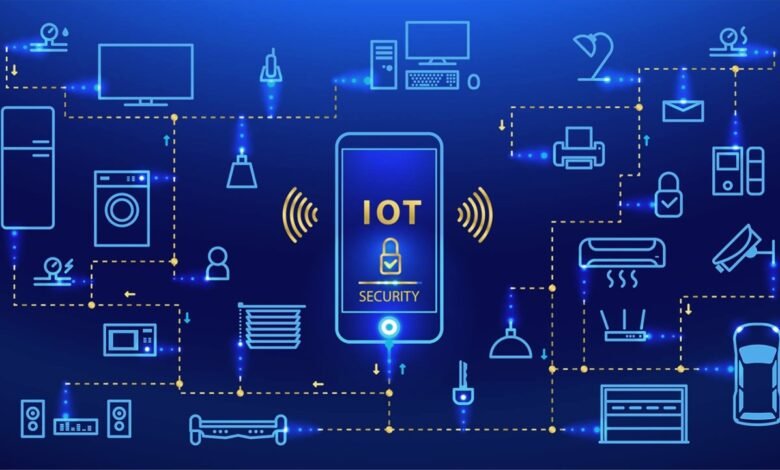Cybersecurity Challenges in IoT Ecosystems – And How to Fix Them
An IoT ecosystem consists of a complex network of devices, software, communication protocols, and cloud infrastructures that work together to collect, exchange, and analyze data

The Internet of Things (IoT) is transforming our world by interconnecting devices and enabling smarter, more efficient operations across industries. From smart homes and wearable tech to industrial automation and healthcare monitoring systems, the growth of IoT is accelerating at a breakneck pace. However, with this proliferation of connected devices comes a new frontier of cybersecurity challenges that threaten not only data integrity but also privacy and safety.
This article delves into the most pressing cybersecurity challenges in IoT ecosystems and provides actionable strategies to mitigate them. By the end, you’ll have a thorough understanding of how to better secure your IoT environment and stay ahead of evolving threats.
Understanding the IoT Ecosystem
An IoT ecosystem consists of a complex network of devices, software, communication protocols, and cloud infrastructures that work together to collect, exchange, and analyze data. Devices range from simple sensors and actuators to sophisticated smart appliances, all of which generate real-time data transmitted via various network protocols.
This interconnectedness is what makes IoT powerful, but it also creates security vulnerabilities at multiple layers—device level, network level, and cloud level. The more entry points a system has, the more opportunities cybercriminals have to exploit them.
Why Cybersecurity in IoT Is a Major Concern
Unlike traditional IT systems, many IoT devices lack robust security features due to limited computational power, cost constraints, or rushed development. Insecure devices can serve as entry points for cyberattacks, including data breaches, denial-of-service (DoS) attacks, and even the hijacking of physical infrastructure, such as smart grids or connected vehicles.
Moreover, IoT devices often operate continuously, collect sensitive information, and are rarely updated, making them perfect targets for persistent threats. This combination of always-on connectivity, data sensitivity, and patch management issues makes securing IoT ecosystems a daunting challenge.
Top Cybersecurity Challenges in IoT Ecosystems
1. Weak or Default Passwords
One of the most common vulnerabilities in IoT environments is the use of weak or default credentials. Many devices are shipped with factory-set usernames and passwords that users never change, creating a low-hanging fruit for attackers. Malware like Mirai has exploited this flaw to launch massive DDoS attacks.
How to Fix It: Manufacturers must enforce strong password policies, including mandatory password changes during initial setup. Implementing multi-factor authentication (MFA) and biometric access controls can further secure device access.
2. Lack of Standardized Security Protocols
The IoT industry is highly fragmented, with different manufacturers using their own proprietary communication protocols and standards. This inconsistency complicates interoperability and makes it difficult to apply uniform security measures across devices.
How to Fix It: Stakeholders must advocate for industry-wide security frameworks and compliance with standards like IoT Security Foundation (IoTSF) or NIST’s IoT Cybersecurity Framework. Regulatory bodies can also play a role by enforcing minimum security baselines for IoT devices.
3. Unencrypted Communication Channels
Many IoT devices transmit data without end-to-end encryption, leaving them vulnerable to man-in-the-middle (MITM) attacks. Intercepted data could include private user information, industrial secrets, or even control signals for critical infrastructure.
How to Fix It: Use secure communication protocols like HTTPS, TLS, or VPNs to encrypt data in transit. Also, implement device authentication mechanisms to ensure data is exchanged only between trusted endpoints.
4. Poor Firmware and Software Updates
IoT devices often run outdated software because manufacturers stop providing updates, or users don’t have an easy way to install them. Unpatched vulnerabilities are a goldmine for hackers looking to exploit known weaknesses.
How to Fix It: Encourage over-the-air (OTA) update capabilities for all IoT devices. Additionally, manufacturers must commit to long-term support and clearly communicate update policies to customers. Automatic update options should also be available to minimize user dependency.
5. Inadequate Device Authentication
In many cases, device authentication is either poorly implemented or completely absent. This allows rogue devices to join networks and execute spoofing or replay attacks.
How to Fix It: Utilize public key infrastructure (PKI), digital certificates, or blockchain-based identity verification to ensure every device in the network can be trusted. Device onboarding processes should also include a mutual authentication protocol.
6. Insider Threats and Human Error
While external attacks get most of the attention, insider threats and human error are significant risks in any IoT environment. Misconfigured devices, poor access control, or lack of employee training can expose critical systems.
How to Fix It: Conduct regular cybersecurity training for all personnel. Implement role-based access control (RBAC) and maintain comprehensive audit logs to monitor activities. Periodic security assessments can help uncover gaps before they are exploited.
7. Scalability and Device Management
Managing hundreds or thousands of IoT devices presents scalability challenges, especially when it comes to consistent security enforcement. Devices may have different hardware capabilities, lifecycles, and ownership models.
How to Fix It: Use a centralized IoT device management platform that supports automated security policies, remote monitoring, and real-time threat detection. Solutions like IoT gateways can also act as intermediaries that enforce consistent security standards across disparate devices.
8. Supply Chain Vulnerabilities
IoT security doesn’t end with the device itself. Vulnerabilities in the hardware supply chain, third-party software components, or cloud services can be exploited to compromise the entire ecosystem.
How to Fix It: Conduct rigorous supply chain risk assessments and adopt a zero-trust security model. Work only with reputable vendors who follow secure development practices and provide full transparency into their security protocols.
9. Lack of Visibility and Monitoring
Many organizations lack the tools to gain real-time visibility into their IoT environments, making it difficult to detect unusual activity or breaches promptly.
How to Fix It: Deploy IoT-specific intrusion detection systems (IDS) and SIEM (Security Information and Event Management) platforms that offer real-time analytics and threat alerts. Continuous monitoring is essential for identifying both internal and external anomalies.
10. Privacy Concerns and Data Leakage
IoT devices collect a massive amount of personal and behavioral data, from health metrics to location history. Without proper safeguards, this data can be stolen, sold, or misused, leading to severe privacy violations.
How to Fix It: Enforce data minimization principles and implement end-to-end encryption of all sensitive data. Devices should also offer users transparent data usage policies and allow them to opt in or out of data sharing.
Emerging Solutions for IoT Cybersecurity
The future of secure IoT depends on a mix of technological innovation, regulatory oversight, and user education. Below are some emerging solutions that promise to fortify IoT ecosystems:
Artificial Intelligence (AI) and Machine Learning (ML)
AI and ML can help detect anomalous behavior and automatically respond to threats in real time. For example, behavioral analytics can flag devices acting outside their normal parameters and trigger alerts or automatic quarantines.
Blockchain Technology
Blockchain can be used to create decentralized security frameworks, particularly for device authentication, data integrity, and secure firmware updates. Its immutable ledger makes it harder for attackers to tamper with logs or forge credentials.
Edge Computing
By processing data locally rather than in the cloud, edge computing reduces the attack surface and lowers the risks associated with data transmission. It also enables faster incident response and better privacy control.
Best Practices for Securing IoT Ecosystems
To effectively mitigate the cybersecurity challenges discussed above, organizations should adopt the following best practices:
-
Conduct regular risk assessments tailored to the IoT landscape.
-
Adopt a defense-in-depth approach, securing devices, networks, and applications.
-
Implement strong identity and access management (IAM) for both users and devices.
-
Stay compliant with data protection laws and industry regulations.
-
Establish a cybersecurity incident response plan specific to IoT breaches.
-
Collaborate with industry partners to share threat intelligence and best practices.
Conclusion
The rapid growth of the Internet of Things brings both unparalleled opportunities and significant cybersecurity challenges. As devices become more ubiquitous, attackers are increasingly targeting IoT ecosystems as weak links in the digital chain. However, by recognizing the risks and implementing comprehensive, multi-layered security strategies, individuals and organizations can enjoy the benefits of IoT without compromising safety or privacy.
A proactive approach—backed by strong encryption, secure development practices, intelligent monitoring, and user education—is essential for building a resilient IoT infrastructure. As the ecosystem evolves, so must our defenses.











